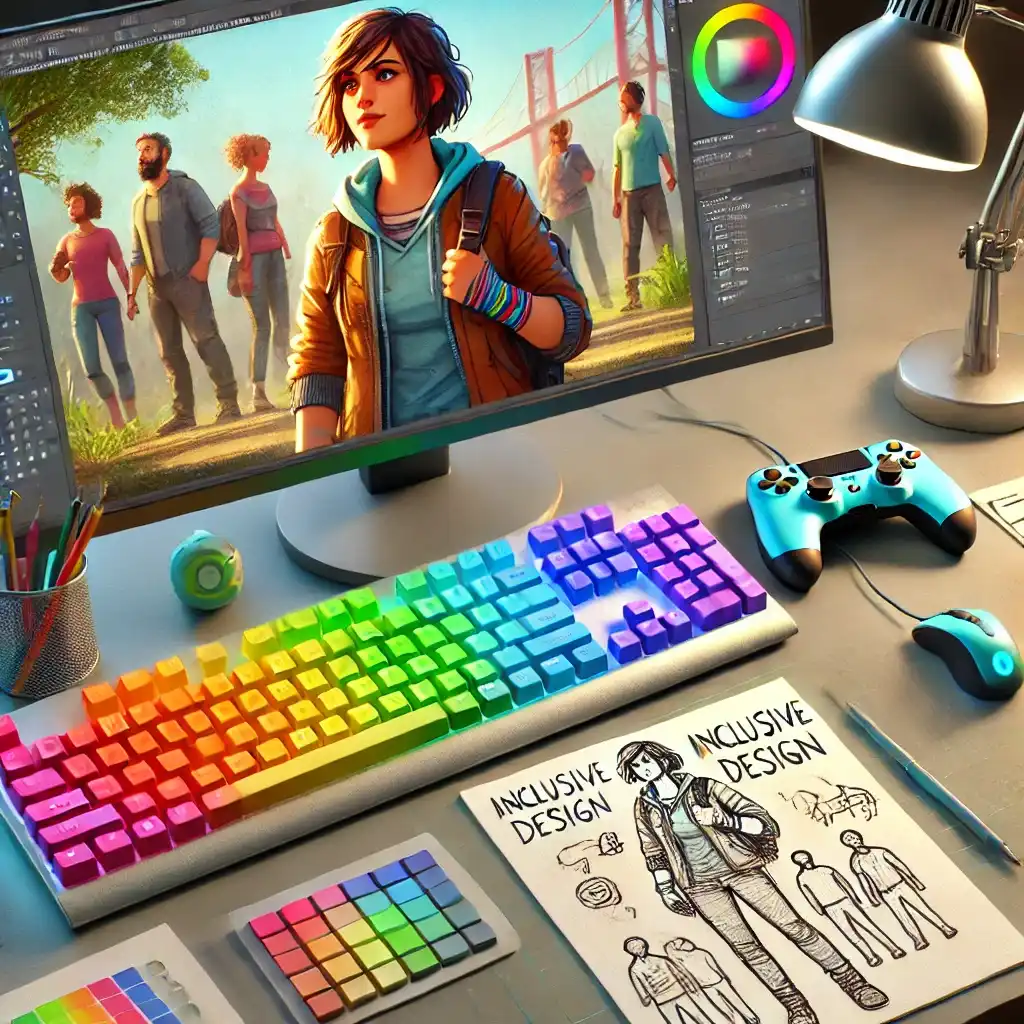

A good game transports you to another world. A great game, however, ensures that everyone is welcome in that world. Inclusive design isn’t just a “nice to have”; it’s the essence of good game design. It’s an ethical responsibility and an opportunity to create richer, more meaningful experiences.
Inspired by our work on the UpGameIn project, which aims to upskill the industry in this area, we share 5 fundamental principles that guide our own process.
1. Representation Matters
Players should be able to see themselves in the stories they play. This means creating diverse characters—in terms of gender, ethnicity, age, abilities, and background. It also means avoiding harmful stereotypes and telling stories that reflect a wide range of human experiences.
2. Accessible by Design
Accessibility isn’t something we add at the end. It must be integrated from the very beginning. Think practically:
- Visuals: Do you use colorblind-friendly palettes? Are the fonts readable and the text scalable?
- Audio: Are subtitles provided for all dialogue and visual cues for in-game sounds?
- Controls: Are the mechanics simple? Can players customize the control keys?
3. Multiple Paths to Success
People think differently. An inclusive game shouldn’t have only one way to solve a puzzle. By offering alternative solutions based on logic, creativity, experimentation, or collaboration, you give more players the chance to shine and feel competent.
4. Clear and Simple Communication
The rules and objectives must be clear to everyone, regardless of their experience with games. Use simple language, combine text with icons, and offer an optional tutorial. A game fails if players lose not because of the challenge, but because of confusion.
5. Co-creation with the Community (The Ultimate Principle)
This is the most powerful principle of all. The best way to know what a community needs is to ask them. Involve members of your target audience in the design process. In ESCAPERS, co-creation with seniors wasn’t just research; it was the very soul of the project. This ensures that the final product is authentic, respectful, and truly useful.
Inclusive design is an ongoing journey, not a final destination. But by placing these principles at the heart of our work, we can create games that not only entertain but also unite.
